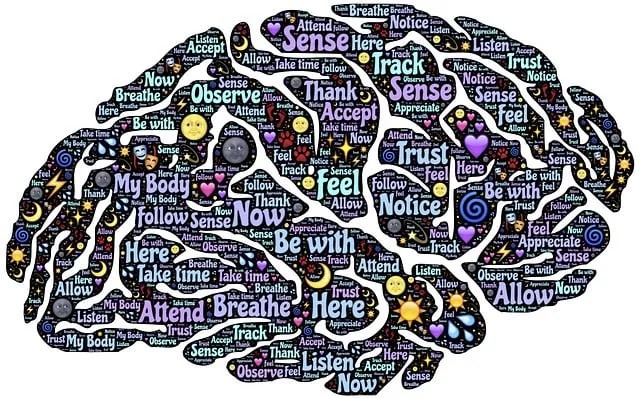Evaluating mental wellness programs, like Kaiser's inpatient services in Aurora, uses methods such as surveys, interviews, and data analysis to measure their impact. Pre- and post-assessments, workshops with feedback, and journaling can track changes and refine program content. Kaiser offers holistic care through individual therapy, group support, and community outreach, combining evidence-based practices with risk management planning. Aurora's unique approach emphasizes community-based interventions, including Compassion Cultivation Practices and Mindfulness Meditation, promoting resilience and self-reliance through social connections, contrasting Kaiser's structured inpatient program for intensive intervention.
Mental wellness program evaluation is a critical aspect of ensuring effective care, and this article explores two notable approaches. We begin by understanding the fundamentals of evaluating such programs, followed by an in-depth look at Kaiser’s Inpatient Mental Health Services. Subsequently, we compare Aurora’s unique approach against Kaiser’s model, examining how each strategy impacts patient outcomes. The discussion delves into the intricacies of inpatient mental health care, shedding light on best practices through case studies, with a focus on Aurora vs. Kaiser.
- Understanding Mental Wellness Program Evaluation
- Kaiser's Inpatient Mental Health Services: An Overview
- Comparing Aurora's Approach with Kaiser's Inpatient Care
Understanding Mental Wellness Program Evaluation

Evaluating mental wellness programs is an essential aspect of ensuring their effectiveness and impact on individuals’ well-being. It involves a systematic process to assess, measure, and understand the success of initiatives aimed at promoting mental health and resilience. The primary goal is to gather insights that can inform improvements and optimize outcomes for participants, especially those in settings like Kaiser’s inpatient mental health facilities in Aurora.
This evaluation process often includes various methods such as surveys, interviews, focus groups, and data analysis. For instance, Mental Wellness Coaching Programs Development might incorporate pre- and post-program assessments to track changes in participant attitudes and behaviors. Similarly, Mental Health Education Programs Design can benefit from interactive workshops followed by feedback sessions to refine content and delivery. Even simple practices like Mental Wellness Journaling Exercise Guidance can be evaluated through journaling reflections, offering valuable insights into individual experiences and preferences.
Kaiser's Inpatient Mental Health Services: An Overview

Kaiser, a prominent healthcare provider, offers comprehensive inpatient mental health services through its diverse network of facilities across various regions, including Aurora. These services cater to individuals facing severe mental health crises, providing intensive treatment and stabilization in controlled environments. The program’s design emphasizes evidence-based practices tailored to meet the unique needs of each patient.
The inpatient program at Kaiser incorporates a holistic approach, incorporating individual therapy, group support sessions, and community outreach initiatives. This multi-faceted strategy aims to address not only acute symptoms but also underlying conditions contributing to mental health challenges. Additionally, risk management planning is an integral component, ensuring the safety and well-being of both patients and mental health professionals involved in the care process, particularly when managing high-risk cases of anxiety relief and other complex conditions.
Comparing Aurora's Approach with Kaiser's Inpatient Care

Aurora’s approach to mental wellness programs stands in contrast to Kaiser’s inpatient care model. While Kaiser focuses on intensive, structured treatment within a clinical setting, Aurora emphasizes community-based, holistic interventions. Aurora’s method incorporates Compassion Cultivation Practices and Mindfulness Meditation techniques to promote emotional well-being, encouraging individuals to integrate these practices into their daily lives. This shift from inpatient to outpatient, or more precisely, community-focused care, allows for greater flexibility and accessibility.
In comparing the two, Kaiser’s inpatient program offers a high level of control and structured support, beneficial for those requiring intensive intervention. Conversely, Aurora’s approach aims to foster resilience and self-reliance by teaching individuals practical tools like Mindfulness Meditation and Emotional Well-being Promotion Techniques that they can apply independently. This alternative strategy recognizes the importance of community and social connections in mental health recovery, potentially leading to more sustainable results.
When comparing Aurora’s approach to Kaiser’s established inpatient mental health services, it becomes evident that both organizations prioritize comprehensive evaluation methods. While Kaiser’s structured framework ensures consistent care, Aurora’s innovative strategies focus on individualization and patient-centric outcomes. Ultimately, the choice between the two depends on specific needs, with both models contributing significantly to the advancement of mental wellness program evaluation. Understanding these distinctions encourages a more nuanced approach to supporting individuals on their journey towards improved mental health.






